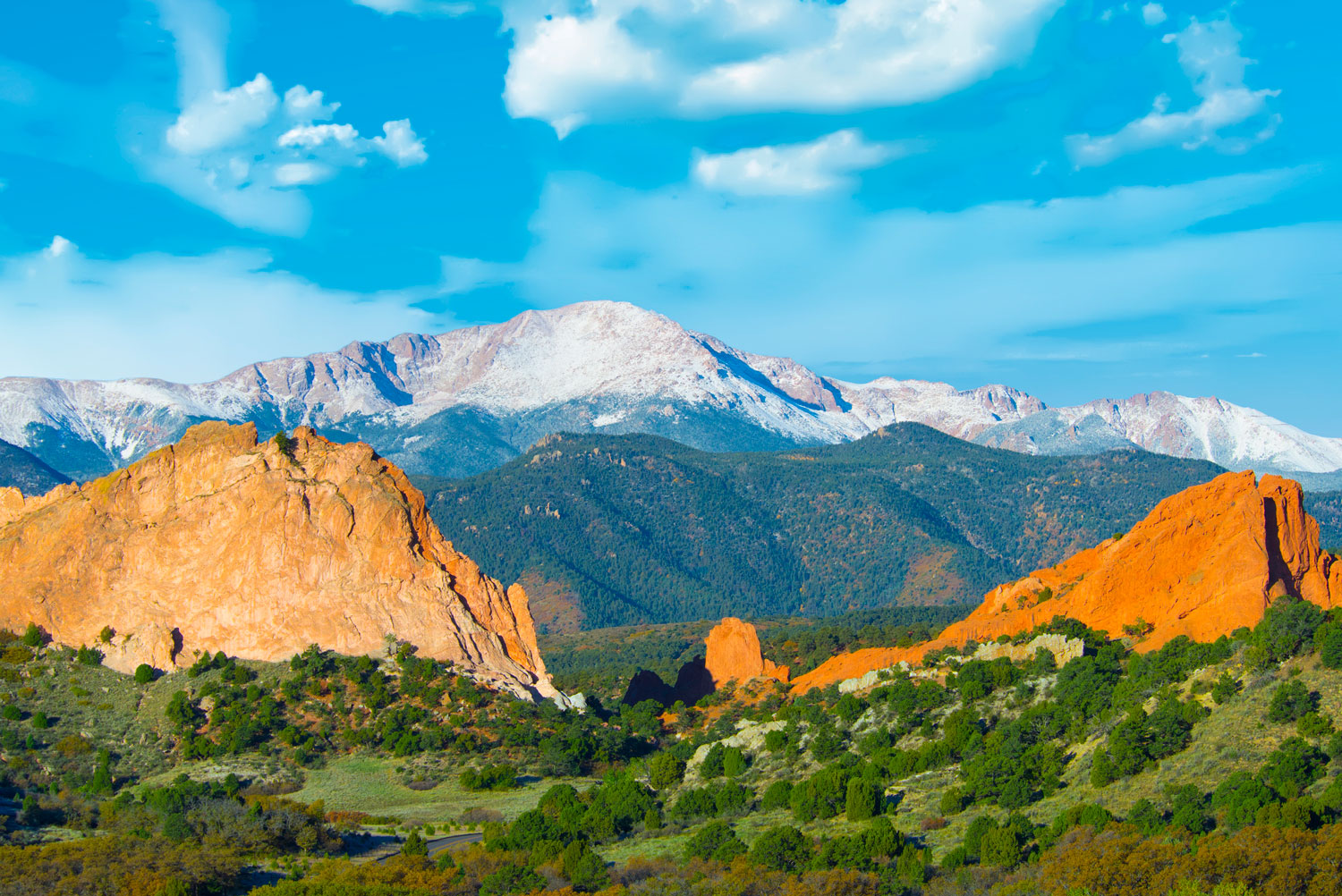
America’s Mountain, Pikes Peak, rises 8,000 feet above the city of Colorado Springs. The 14,115-foot mountain is perhaps the most well-known attraction of this western city in central Colorado.
In fact, it’s the reason the tourism marketing team calls the entire area the Pikes Peak Region. But there’s so much more to see and do in and around this amazing city.
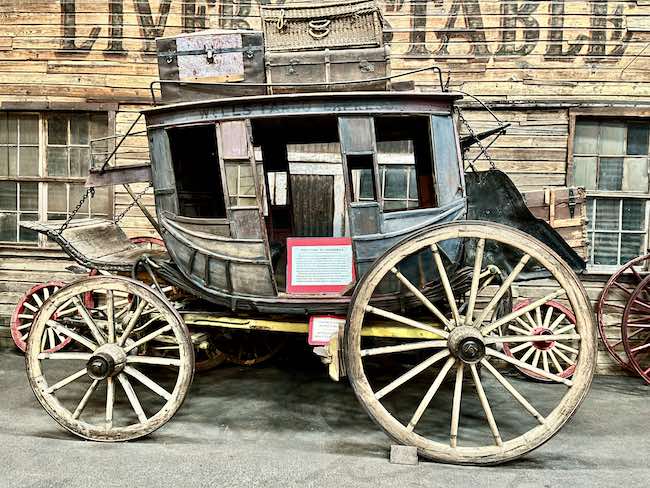
As a Colorado native, I’ve been going to the Pikes Peak Region since I was a child, staying at the world-famous luxury Hotel Broadmoor with my family.
In addition to riding the Cog Train up Pikes Peak, we made many trips to Seven Falls, Cave of the Winds, Cheyenne Mountain Zoo, Royal Gorge Bridge & Park, Garden of the Gods, Cripple Creek, Manitou Cliff Dwellings, and all the other places that appeal to families.
However, on my recent visit as a travel writer, I was thrilled to discover some new and interesting places that I had not known about all these years. Hence, I’m sharing them with you.
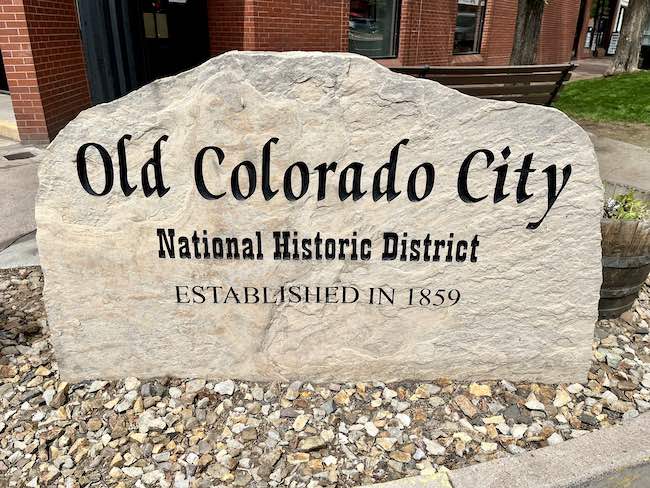
Old Colorado City
I’m not big on shopping when I travel; I much prefer learning about the history of a place. Therefore, Old Colorado City—a neighborhood two miles west of downtown Colorado Springs—appealed to me.
Most tourists go shopping the fun boutiques and visit top-notch restaurants and art galleries that dot its seven-block main street Colorado Avenue. But I found the History Center at the beginning of town the most interesting.
Here I learned Colorado City (the original name) was founded in 1859 during the Pikes Peak Gold Rush. It was briefly the capital of the Colorado territory until the legislature found the cabin too small for meetings and moved the capital to Denver. The processing mills for gold mined in Cripple Creek an hour away were here.
Consequently, the town was filled with miners buying supplies and visiting bars, brothels and opium dens that were outlawed in neighboring Colorado Springs due to its teetotaler founder William Jackson Palmer.
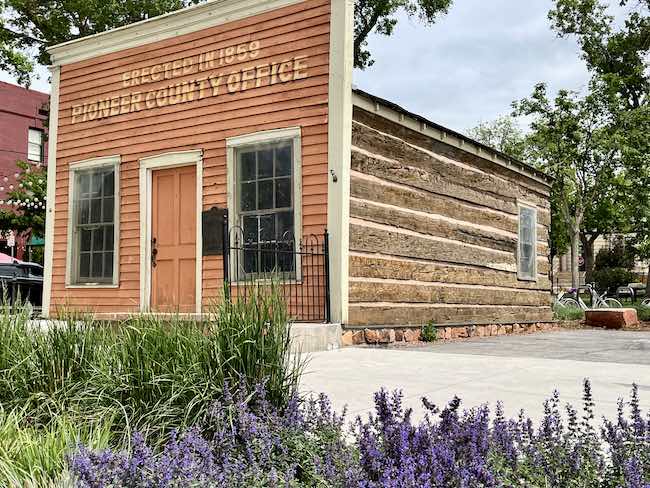
Back in the Day
The north side—the “dry” side—of Colorado Avenue was respectable, with stores, churches, a Carnegie Library, and an opera house.
The south side was home to all the naughty businesses, like Laura Bell’s Bordello in the Red Light District and 21 saloons. Consequently, men built tunnels under the street to get to the “wet” side incognito. “This was the real wild west,” said Leo Knudson, a docent at the center.
He also told us about Pastor Duncan Lamont, who in 1909 noticed a fire that had suspiciously broken out across the street from his church. He ran outside yelling, “Praise the Lord, our prayers have been answered. The saloons are burning!” The angry firefighters turned their hoses on him, and the cold January air froze the water on his skin.
This and many other stories are told at the History Center.
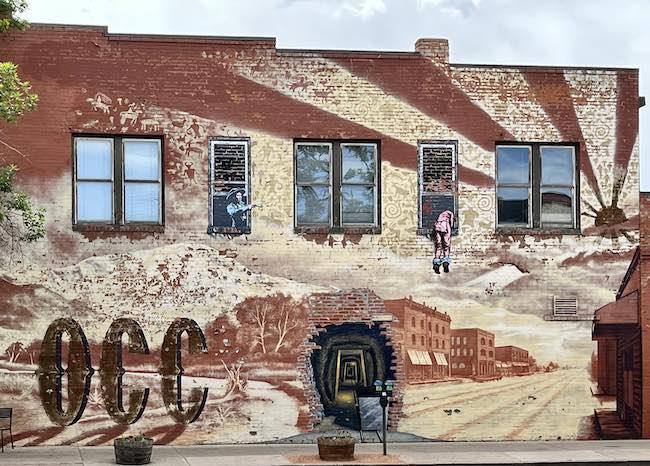
Ghost Town Museum in Pikes Peak Region
At age 55, Lois Akers started collecting artifacts from abandoned Old West towns. An old saddle here, a Wells Fargo safe there, and before she knew it, she had an entire warehouse full of valuable antiques.
In fact, she had so many—including original wooden buildings—she had enough to re-create an authentic Main Street like Cripple Creek or Old Colorado City may have looked in the late 1800s.
When the huge 1899 Colorado Midland Railroad maintenance building became available, she moved everything in and turned it into Ghost Town Museum that opened in 1954.
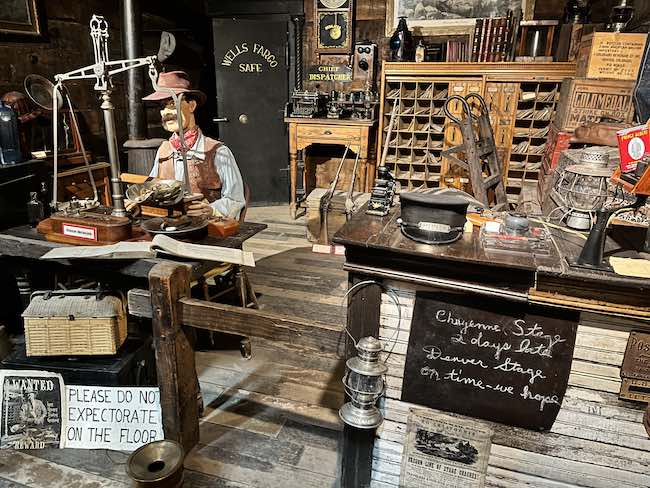
No Ghosts
And by the way, there are no ghosts. A ghost town is one that has been deserted and, in many cases, looks just as it did back in the day. Hence, the name.
This town is a delightful throwback to an era of building railroads, discovering gold and silver, and winning the west. After peeking into the 12 frontier businesses along the boardwalk, you can try to knock down critters at the shooting gallery and play antique arcade games.
Kids love going outside to pan for real gold while adults shop for vintage treasures in the gift shop. It’s a real Old West experience.
Mrs. Akers and her husband worked at the museum daily well into their 80s. She lived to be 97! Now her granddaughter Kathy Harris and her husband Dave continue to run the attraction in her memory.
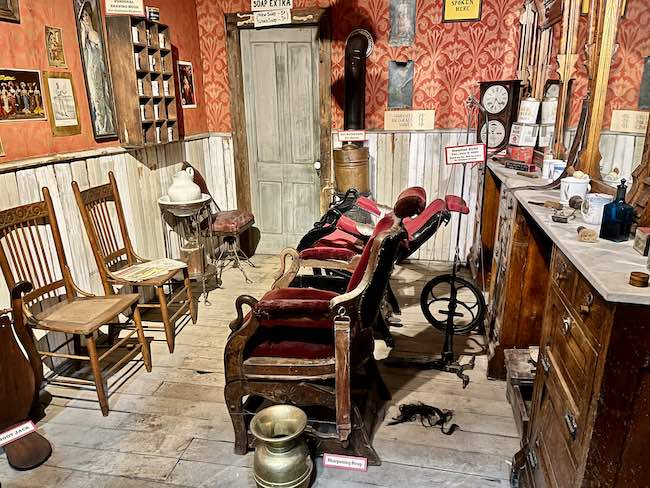
May Natural History Museum
If you’re traveling on Highway 115 at the entrance to Rock Creek Canyon, you may see a strange-looking creature on the hill. Don’t panic—it’s only a statue. This giant Hercules Beetle has been marking the turnoff to the May Natural History Museum in Colorado Springs for 60 years.
You won’t want to miss this display of 7,000 insects neatly hand-tagged and pinned in cases in the largest private collection in the world.
How does anyone collect that many bugs? It started five generations ago in the 1800s with the father of James F. M. May, a collector with the British Museum. Son James grew up in Brazil and was injured in the Boar War in 1899.
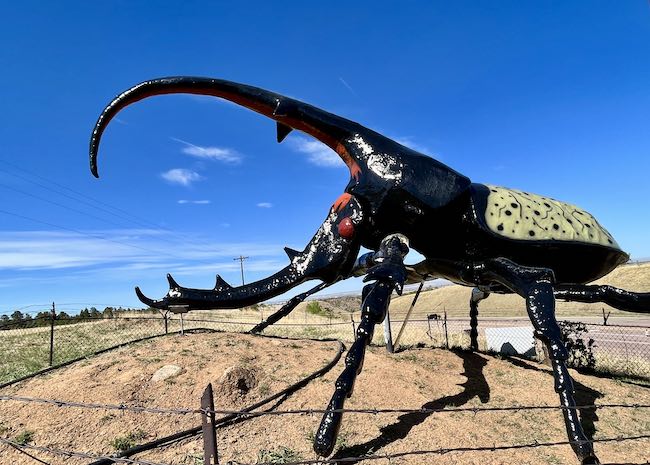
While convalescing in South Africa, he started collecting insects, making it his life’s work until his death in 1956. His entrepreneur son John May saw an opportunity for a business and created a traveling show with cases of his father’s exotic bugs before settling in the Colorado Springs area in 1947.
The May family’s collection actually consists of more than 100,000 invertebrates. However, only the most beautiful and most valuable are on display at the museum John May built by repurposing and recycling materials.
The bugs on display come in every color, shape and species imaginable. There are beautiful butterflies, scary scorpions and spooky spiders. There are insects that can kill and insects that look like a bundle of sticks until they move. The assortment of species is utterly fascinating.
Indeed, the technique for catching them and then preserving and displaying them is just as interesting as the family story.
The museum today is run by the grandchildren of John May. “The May Museum is our family heritage,” said Diana Fruh. “It is an amazing treasure and we are privileged to continue to operate and maintain it so the public can have this one-of-a-kind experience.”
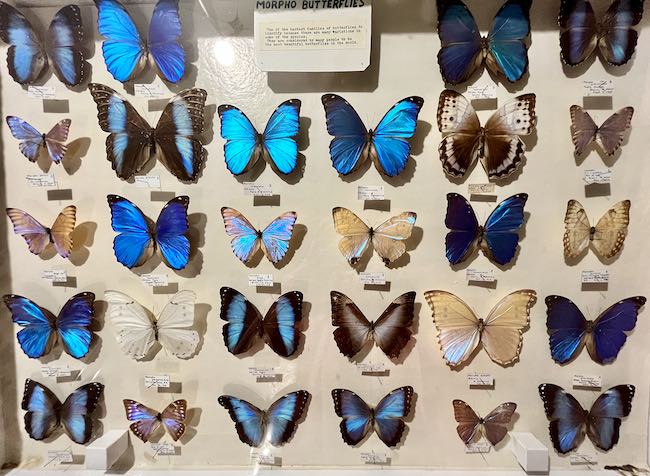
North Pole in Pikes Peak Region
Here is yet another family-owned attraction that has been sustained through three generations of ownership. Pike Peaks Region’s North Pole in Colorado is a charming Christmas village that was a yearly stop for our family when my five kids were little. But this time I learned more about it from Austin Lawhorn whose grandfather George Earl Haggard built the park in 1956.
He hired former Walt Disney artist Arto Monaco who designed a similar village in Lake Placid, NY. Amazingly, his inspiration came from an eight-year-old girl who told him how she envisioned Santa’s home to be.
He incorporated her vision into a village of 12 old-fashioned alpine cabins that would house artisans’ workshops. That’s exactly what I remember from the 70s.
However, they’ve made changes over the years, and today, there is a glassblower’s shop, several toy stores, a candy store, an ornament shop, and a Christmas store. In addition, a magician regularly puts on a magic show and you can send letters from the North Pole post office.
A home for Santa and Mrs. Claus is still a highlight where children can sit on the lap of the jolly old man. And lots and lots of rides.
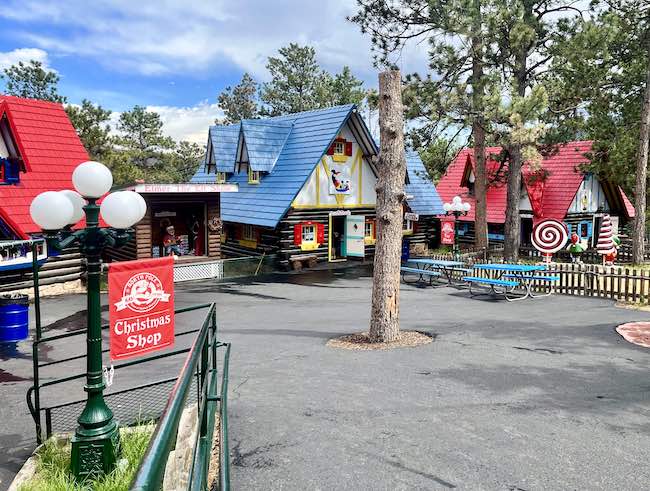
Old-Fashioned Tradition
All the rides are brightly colored in holiday hues, adding to the delightful Christmas theme of the entire park. Lawhorn’s dad Tom Haggard now is the owner, while her mom Susie, brother Shane and her “keep things going.”
“We have kept our original design and village,” said Lawhorn. “We’ve spent time restoring and collecting old rides to keep that simple charm alive as larger theme parks become more popular. We embrace our place as a bit of an old dinosaur and take pride in that. I feel like there is a place for nostalgia in our industry.”
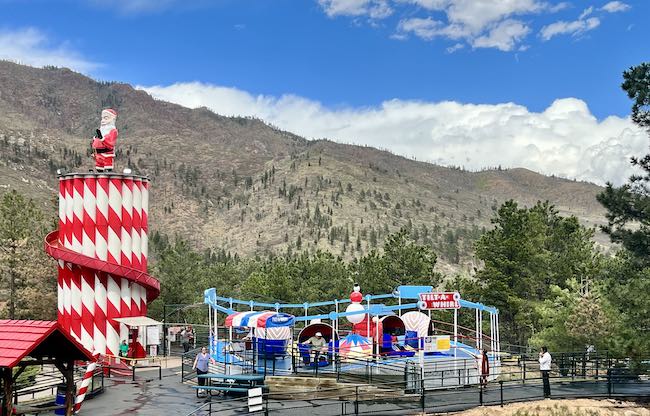
In keeping with the old-fashioned tradition, the carousel dates back to 1919. Children ride original hand-carved wooden horses on this one made in New York and brought to the North Pole in the early 1960s.
It is a rare find. Indeed, it’s one of less than 200 carousels that remain of about 8,000 made in America around the turn of the century when they were popular.
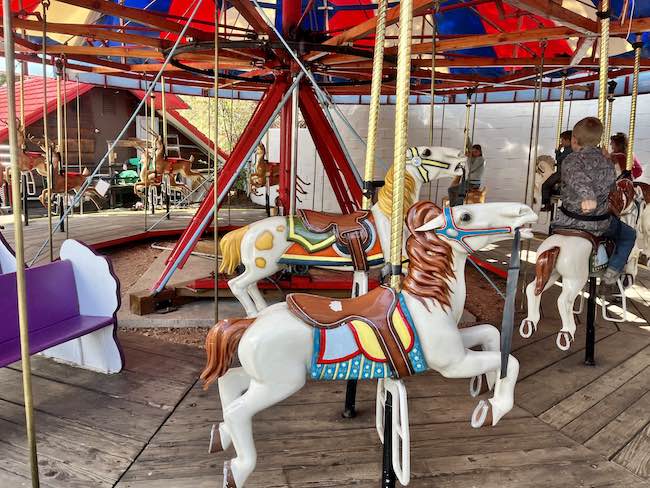
Miramont Castle
Who doesn’t love exploring a castle? Miramont Castle in Manitou Springs is the real deal. In 1895, a wealthy priest Fr. Jean Baptiste Francolon came from France via New Mexico and built it as a lavish home for him and his mother. But they didn’t stay long, moving back to France in the early 1900s.
Since then, it has had many iterations, including a sanitarium run by the Sisters of Mercy and apartments for soldiers returning from World War ll.
Finally, after many different owners, the Manitou Springs Historical Society purchased the deserted 14,000-square-foot mansion in 1976, saving it from condemnation.
After years of restoration by volunteer manpower, the lovely castle is open for tours, weddings and special events.
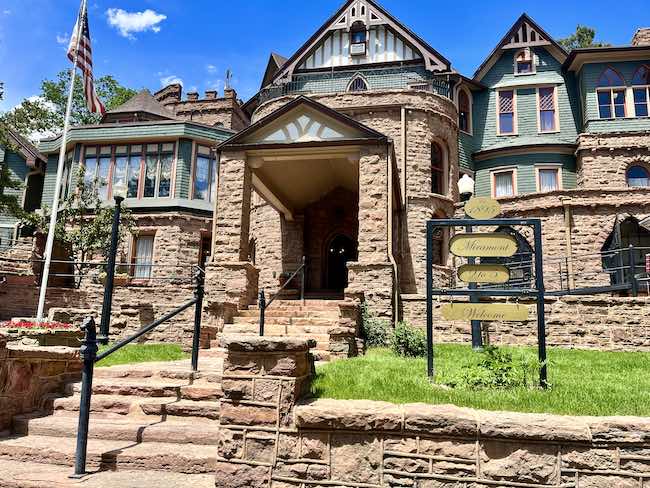
In addition to its beautifully refurbished Victorian decor spread throughout four floors, the building is noted for its nine different styles of architecture designed by Fr. Francolon.
You can see shingle-style Queen Ann, English Tudor, Romanesque, Flemish Stepped Gables, Venetian Ogee, Domestic Elizabethan, Moorish, Byzantine, and Half-Timber Chateau.
He hired local masons to cut green sandstone found in the area for the two-foot thick walls. Furthermore, each of the floors is built into the mountainside, so that each opens onto ground level. In typical Victorian style, many of the 30 rooms are unusually shaped.
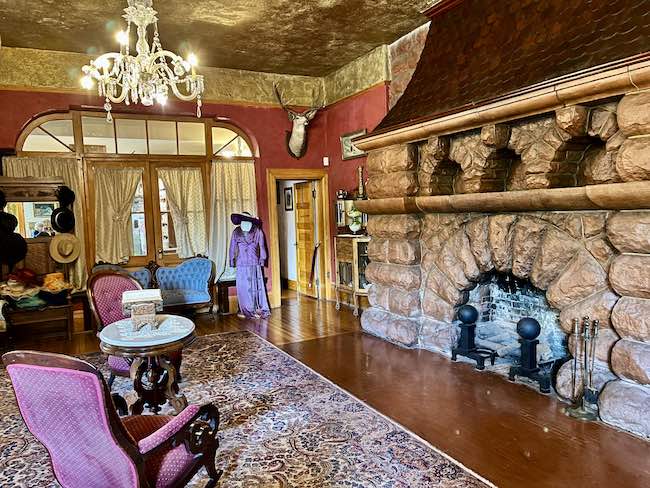
And not typical of the time, the castle had indoor plumbing, steam heat and electricity when it was built. There are also tunnels and hidden compartments within fireplaces, adding to the intrigue of the priest’s early departure.
Conclude your tour with a genteel High Tea in the Queen’s Parlour Tea Room. It’s open to the public from 11-3 every day in the summer; closed Mondays during the off-season. Reservations: 719-685-1011.
For information on other places and attractions in The Pikes Peak Region, visit www.pikes-peak.com.
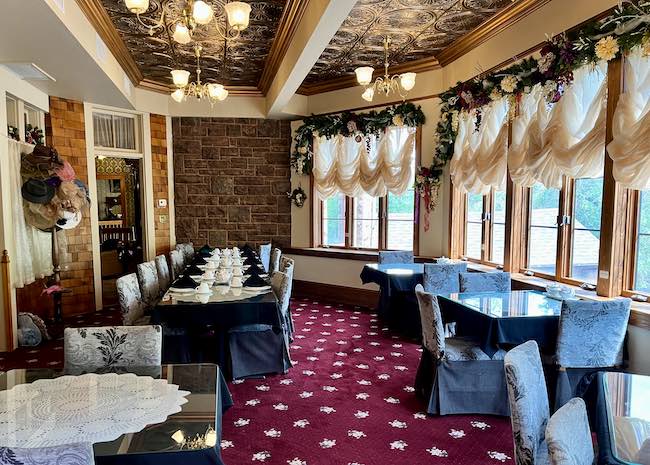
Book This Trip
Start planning your Pike’s Peak adventures in Colorado today. Get prepared with knowledge on the best shopping, hotel and VRBO accommodations, local restaurant reviews and more through TripAdvisor and Travelocity.
Plan even more fun by booking some unique Colorado activities, expert-led tours, skip-the-line tickets to major attractions and more through GetYourGuide. Find more information and book your dates in advance here.
For exclusive flight discounts, car rental options and vacation packages, check out CheapOair.
Author’s Bio: Colorado-based Claudia Carbone is an award-winning travel writer and member of the Society of American Travel Writers, North American Travel Journalists Assoc. and Denver Woman’s Press Club. Currently, her work is published in The Denver Post, Colorado Expression Magazine, London Sunday Telegraph, GoWorldTravel.com, RealFoodTraveler.com and MTNtown Magazine. Her blog Sleepin’ Around covers any place you can sleep on vacation.
- How to Get Around in Sydney: A Local’s Guide to Traveling Around Sydney - April 24, 2024
- The Low-Key Magic of Ghent, Belgium - April 22, 2024
- Discover the Hidden Charm of Extremadura in Spain - April 20, 2024

I’m so excited to visit the attractions near Pikes Peak! I can’t wait to see what’s on the list!